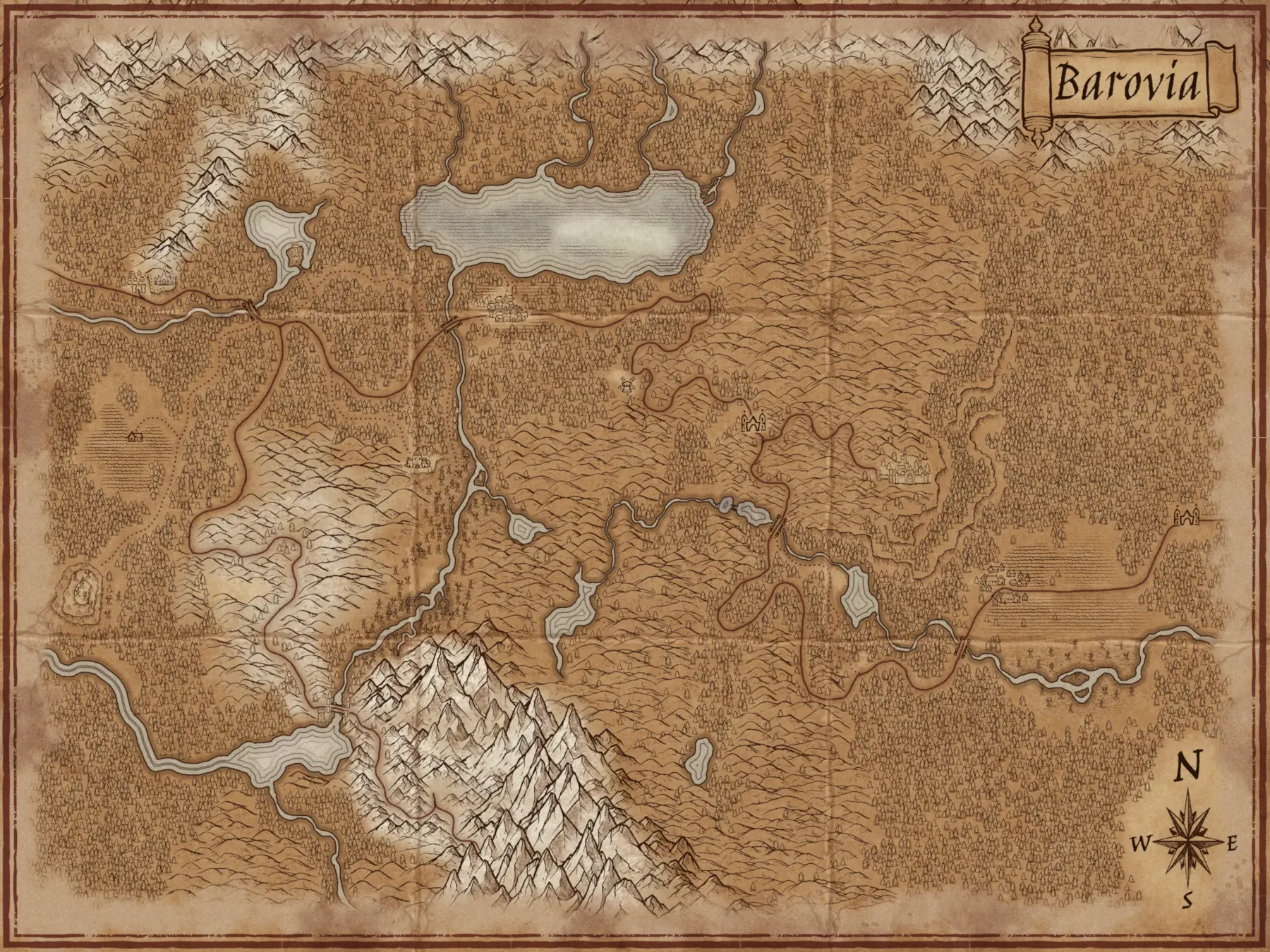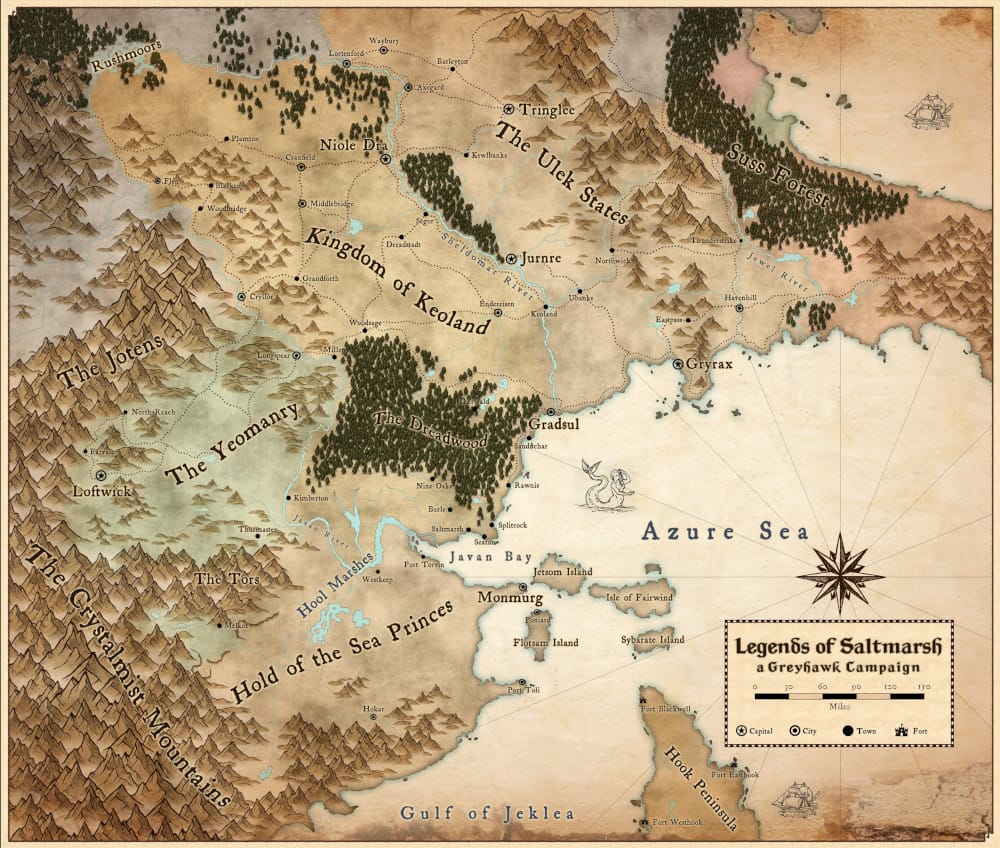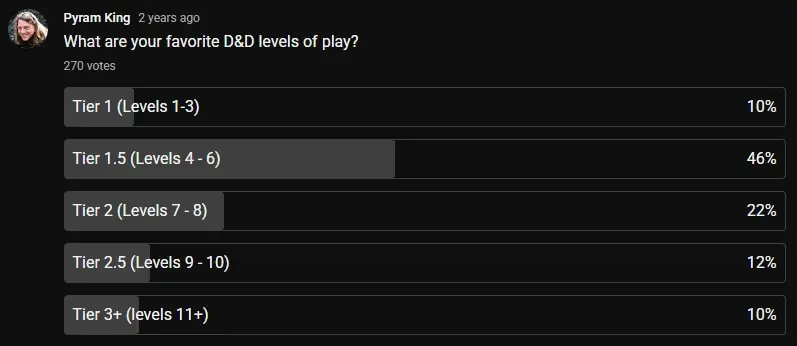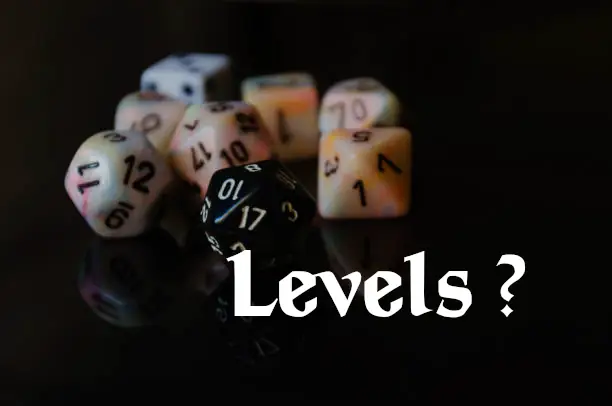After creating numerous adventures for 5e; such as Legends of Barovia and Legends of Saltmarsh, I have had to grapple with one persistent design challenge: levels.
Levels can be both a blessing and a curse. In a structured campaign like Legends of Barovia (inspired by Curse of Strahd), they work beautifully. The progression is natural: characters slowly grow in power as they uncover Barovia’s secrets, gather allies, and prepare for their final confrontation with Strahd. The design lends itself to a clear stepping-stone approach: by the time players reach Vallaki (around level 4-5), the world begins to open; Kresk, the Wizard of Wines, Van Richten’s Tower, and more. Each stage feels purposeful and tied to level-based advancement.

By contrast, Legends of Saltmarsh (based on Ghosts of Saltmarsh & the World of Greyhawk) is a different beast. With DM Andy’s help, I have been expanding Saltmarsh into a hub for open-ended quests; politics, factions, sea travel, and wilderness exploration. Here, strict level progression becomes harder to manage. To keep the game grounded (and to match how most people actually play), I am limiting progression to about levels 5–6. Published data and my own polls show that most campaigns either end by this point, or players simply prefer to stay in this sweet spot of play.

Why Cap Levels?
Level-based systems shine in epic high-fantasy; D&D, Pathfinder, and others thrive here. But Medieval 5e is not epic high-fantasy. It’s low-magic, gritty medieval realism, closer to Game of Thrones than Forgotten Realms. Characters are human. Monsters are rare. Death is final.
Many RPG designers recommend skill-based systems for this kind of play, but since our foundation is 5e, I needed another solution.
One major influence was Professor Dungeonmaster (Dungeoncraft), who’s run a decades-long campaign capped at level 6. He points out that the game lives in its “sweet spot” here: hit points stay low, tension stays high, and the world remains dangerous. My own polls, as well as official D&D data, back this up. Tier 2 (levels 5–10) is the most popular range, and within that, levels 5–7 see the most play.

I also drew inspiration from Ryan Stoughton’s E6: The Game Inside the World’s Most Popular RPG (2007), which caps progression at level 6 and then transitions into “Epic 6,” where characters advance through feats and skills rather than raw power.
As Stoughton put it:
“Levels 1 to 6 are the period where a character comes into their own. A crash course in action and danger transforms them from commoners into capable fighting men (or corpses). Beyond that, growth isn’t a linear scale anymore—it’s refinement.”
That line became the core mantra of Medieval 5e. Characters level up hit points and abilities until level 6. After that, they are veterans, still learning skills and tricks, but no longer climbing the epic power curve.
Encounter Design
What about high CR monsters? Simple: not every encounter is winnable.
Medieval 5e is not about balanced fights. The GM must telegraph danger, and players must weigh their choices: fight, retreat, bargain, trick, or surrender. This is not “speed-bump combat.” Death is final.
From my experience, a skilled party of level 6 characters can punch far above their CR weight. That said, I set the world’s soft cap around CR 10. Legendary foes; vampires, werewolves, ancient undead do exist, but they are rare, mythical dangers, not everyday opponents (think Game of Thrones beyond the Wall). Most encounters are rooted in the gritty and human: bandits, beasts, warlords, or fanatical cults. The tone leans toward Conan the Barbarian, Valhalla Rising, Arn: Knight Templar, Flesh & Blood, or Excalibur, where the world feels raw and brutal, and brushes with the supernatural are rare, terrifying, and unforgettable.

Advancement Without XP
Another big change: I removed traditional XP.
Why?
- Medieval 5e is not a dungeon crawl or loot hunt. It is a medieval sandbox of politics, factions, and myth. Treasure is not the main motivator; stories, allegiances, and choices are.
- Advancement should reflect both player experience and character milestones.
So I built a hybrid milestone + play system:
- Players need time at the table (sessions)
- Players need danger survived (encounters)
- Players need story advancement (quests completed)
A character cannot level up without all three. This keeps pacing steady, roughly one level per short arc and ensures everyone hits the gritty “local hero” ceiling at level 6.
Level Advancement Table (to Level 6)
| Level | Sessions Required | Encounters Survived | Adventure/Quest Requirement |
|---|---|---|---|
| 1 → 2 | 2+ sessions | 2+ encounters | Complete one adventure/quest |
| 2 → 3 | 3+ sessions | 3+ encounters | Complete one adventure/quest |
| 3 → 4 | 4+ sessions | 4+ encounters | Complete one adventure/quest |
| 4 → 5 | 5+ sessions | 5+ encounters | Complete one adventure/quest |
| 5 → 6 | 6+ sessions | 6+ encounters | Complete one adventure/quest |
By level 6, a character will have played at least 20 sessions, survived 20 encounters, and completed six adventure milestones.
Note: These are minimums, one can increase the number of sessions, encounters, and/or adventures per level to meet their campaign goals. These are guidelines.
Veteran Play
Beyond level 6, characters no longer gain hit points or ability increases. Instead, they earn:
- New skills every ~5 sessions or at major milestones
- Subclass features, fighting styles, or unique boons inspired by D&D’s existing feature spread
This keeps characters evolving without breaking the gritty scale.
Final Thoughts
By capping at level 6, we keep hit points grounded (usually around 30 HP if rolling, without stacking huge CON bonuses). We avoid modifier inflation. Most importantly, the world opens into a true sandbox: once players hit level 5+, they can go anywhere without worrying about “stepping-stone” level gates.
Medieval 5e aims to capture that grounded, perilous feel where every decision matters, every fight is dangerous, and characters live in the thin space between heroism and mortality.


Member discussion: